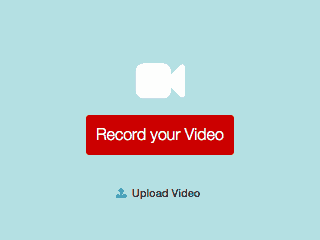Asynchronous video meets WebRTC.
One area where WebRTC is making strides recently is video streaming. Some of the hyped use cases today are those that enable broadcasting in real time, but there’s another interesting approach – one where WebRTC is employed when the video consumption is asynchronous from its creation.
 Ziggeo is an API provider in this specific niche. I met with Susan Danziger, CEO of Ziggeo, and asked her to share a bit of what it is they do with WebRTC and how it is being adopted by their customers.
Ziggeo is an API provider in this specific niche. I met with Susan Danziger, CEO of Ziggeo, and asked her to share a bit of what it is they do with WebRTC and how it is being adopted by their customers.
What is Ziggeo all about?
Ziggeo is the leader in asynchronous (recorded) video offering a programmable video recorder/player through our API/native SDKs.
You started by working on an HR interviews platform. What made you pivot towards a video recording API platform instead?
In building our own video recording/playback solution for the platform, we realized what a complicated and time-consuming process building our own solution was. We had to make sure that videos could be recorded and played across all devices and browsers (even as new ones were released) and build a permissions-based security solution that would withstand hackers. We were surprised there were no off-the-shelf solutions available so decided a bigger opportunity would be to release our technology as an API — and then native SDKs (and shortly thereafter closed our B2C platform).
On the same token – you have Flash there. Why did you add WebRTC? Wasn’t Flash enough for your needs?
For the most part our customers hate Flash. And no wonder: browsers that support Flash have an awful user experience in which you need to basically hit 3 different buttons before you can begin recording from your web camera (once to resume the suspended Flash applet and twice to access the camera).
We added WebRTC to avoid Flash whenever possible. That said, for certain browsers, e.g. Safari and Internet Explorer we need to default to Flash as they don’t yet support WebRTC.
How are customers reacting to the introduction of WebRTC to Ziggeo?
Customers love it! In fact, our customers seek us out in part because we’re the only API for asynchronous video recording that supports WebRTC.
Can you share a few ways customers are using Ziggeo?
In addition to recruiting (where candidates introduce themselves on video), we’ve seen Ziggeo used for training (e.g. trainees record video sales pitches for feedback); dating (potential dates exchange video messages); “Ask Me Anything” (both questions and responses on video); e-commerce (products introduced on video and video reviews recorded); advertising (user-generated videos submitted for contests or for use in commercials); and journalism (crowd-sourcing videos for news from around the world). I’m still waiting for someone to create a video version of Wikipedia where pieces of knowledge are recorded on video from around the world — that would be the most amazing use case of all.
A video version of Wikipedia. Have it in Hebrew and I’ll sign up my daughter on it.
You don’t use the Peer Connection APIs at all – Just getUserMedia. Why did you make the decision to record locally and not use the Peer Connection and record on the server?
Folks like to re-record locally so we chose not to use unnecessary resources. We pride ourselves on making our technology as efficient and seamless as possible.

How do you store the file locally and how do you then get it to your data centers?
We use IndexedDB to store the file locally and then push it using chunked http.
Viewing. Over what protocols do you do it, and how do you handle the different codecs and file formats?
Protocols: Http pseudo streaming, HLS, rtmp, rtsp
Formats: we transcode videos to different formats (mp4, webm) and resolutions
Where do you see WebRTC going in 2-5 years?
We imagine there will be full support of WebRTC across all browsers and devices as well as better support for client-side encoding of video data.
Given the opportunity, what would you change in WebRTC?
We’d like to see improved support for consistent resolution settings as well as for encoding
What’s next?
We’re planning the 2nd Annual Video Hack Day in NYC for this coming May. You can find more information here at: videohackday.com or follow @videohacknyc on Twitter
–
The interviews are intended to give different viewpoints than my own – you can read more WebRTC interviews.
